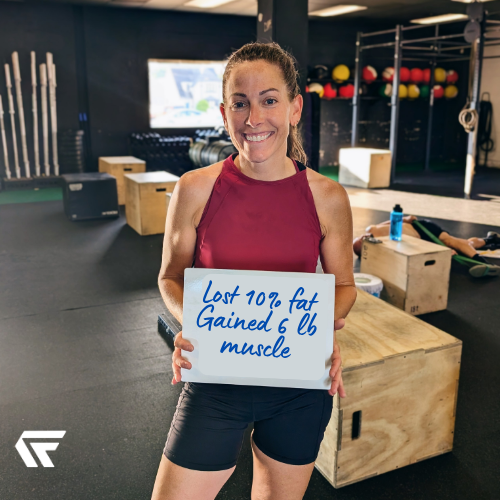How Many Calories You Actually Burn In A Workout
If you're like me you've probably thought after a workout...
"OMG that was a big one I feel like I burned 1000 calories! I don't need to watch about what I eat today."
This mindset is super common but also one of the biggest places people get tripped up in their fitness and fat-loss goals.
The truth is...most workouts burn FAR fewer calories than you think!
"Oh but my trusty Apple watch says I burned 500!" If you did solid zone 2 cardio for an hour maybe.
Trackers are often off by 20-30%, and the tougher the workout feels, the more we like to inflate the calorie count.
Here’s what the average person at 150–180 lbs typically burns:
60-Min CrossFit / Functional Fitness Class
Actual burn: 180–300 calories
Equivalent meal: A Starbucks muffin (400+), or a Chipotle burrito...easily 800–1,000+.
20-Min Assault Bike Interval Session
Actual burn: 120–180 calories
Equivalent meal: A protein bar or a handful of nuts.
30-Min Moderate Jog
Actual burn: 200–250 calories
Equivalent meal: Half a dessert. 4 Oreos.
60-Min Walk
Actual burn: 150–200 calories
Equivalent meal: A small latte.
45-Min Strength Training Session
Actual burn: 80–150 calories (strength training doesn’t burn much during…strength pays off later in life)
Equivalent meal: A high-protein smoothie.
Here's the problem
We finish a workout and think:
- “I burned 700 calories, I should refuel big.”
- “I earned a cheat meal.” Whatever that is.
- “This workout was insane, I can eat whatever I want today.”
Most workouts do NOT burn enough calories to “cancel out” a high-calorie meal. And even if they did, this earn it / burn it cycle destroys consistency.
It's not your workout that drives results, it’s your weekly habits.
Instead of obsessing over what your watch says you burned or going by how hard the workout felt, shift your focus to:
Knowing your actual daily calorie needs
Your total daily energy expenditure (TDEE) is an important number to know. This includes your resting metabolism, digestion, daily movement, AND your workouts.
Copy and paste this into ChatGPT: I am [male/female] age [38], I weigh [168] pounds with a body fat percentage of [28%], I'm [5'7"] tall. I workout [4] days a week and have a low level of activity otherwise. Please calculate my BMR and TDEE.
If you know your muscle mass include that too for a more accurate calculation. Exchange the numbers for your own data. And yes, say please and thank you to ChatGPT too! :)
You can go as far as you want and have it create a simple MACRO and meal plan too.
Tracking your average intake over a week
Not just three days. Not just when motivation hits.
A weekly view gives you a true reflection of your habits and accommodates ups and downs and parties and eating out.
Being consistent, not reactive
Whether your workout felt easy or brutal, that doesn’t change your daily needs. Keep it steady.
Using exercise for fitness, not permission to overeat
Exercise builds muscle, boosts mood, improves health, and it should stay in that lane, not be treated like a points system.
Reality
Most workouts burn a meager 100–300 calories.
Most “cheat meals” are 800–1,000+.
If your goal is fat loss, muscle gain, or maintaining a healthier lifestyle, the keys are:
Stay steady and consistent across weeks and months.
Move because it’s good for you.
Use data not feelings.
Fuel with quality and awareness.
This mindset shift is what finally removes the stress, confusion, and yo-yo cycle so many people get stuck in.
If you want help figuring out your real calorie needs or learning how to build more balanced weekly nutrition and workouts habits, book a No Sweat Intro with me and I’ll guide you through.







